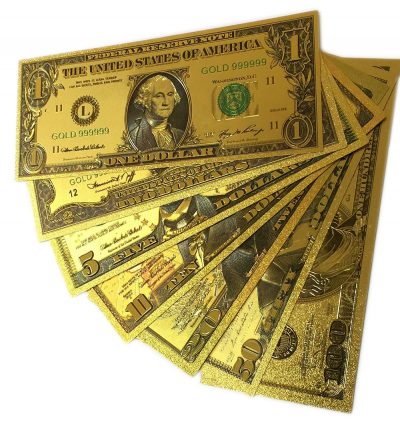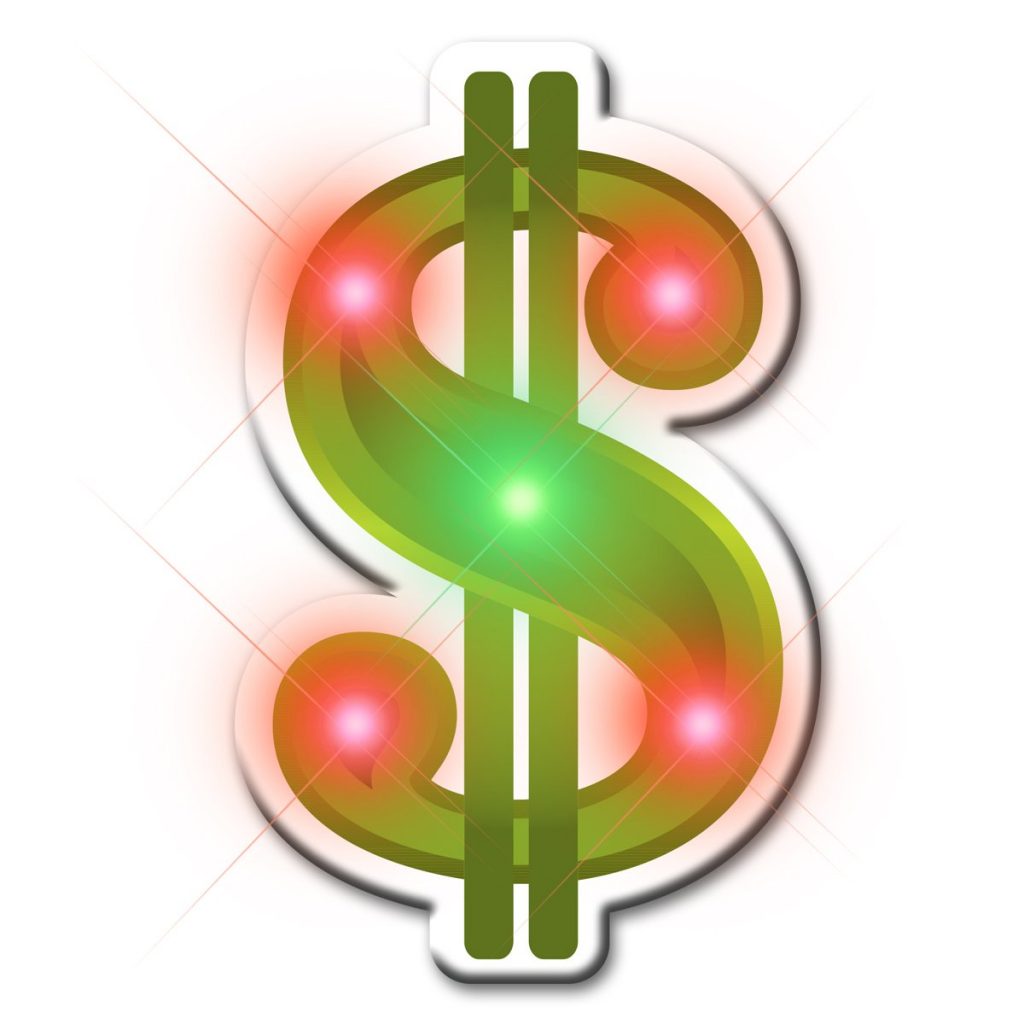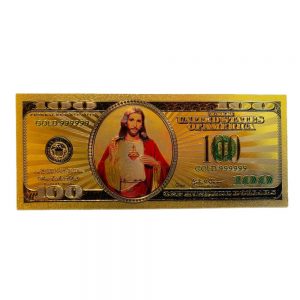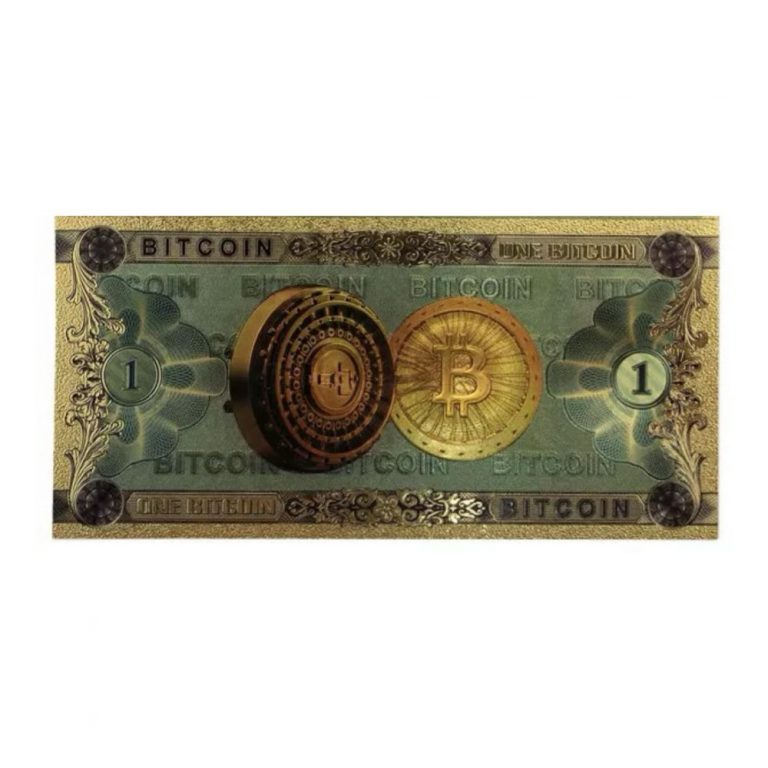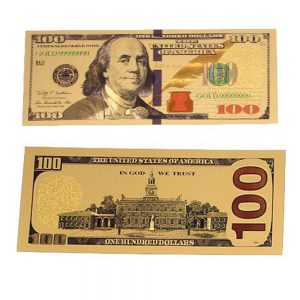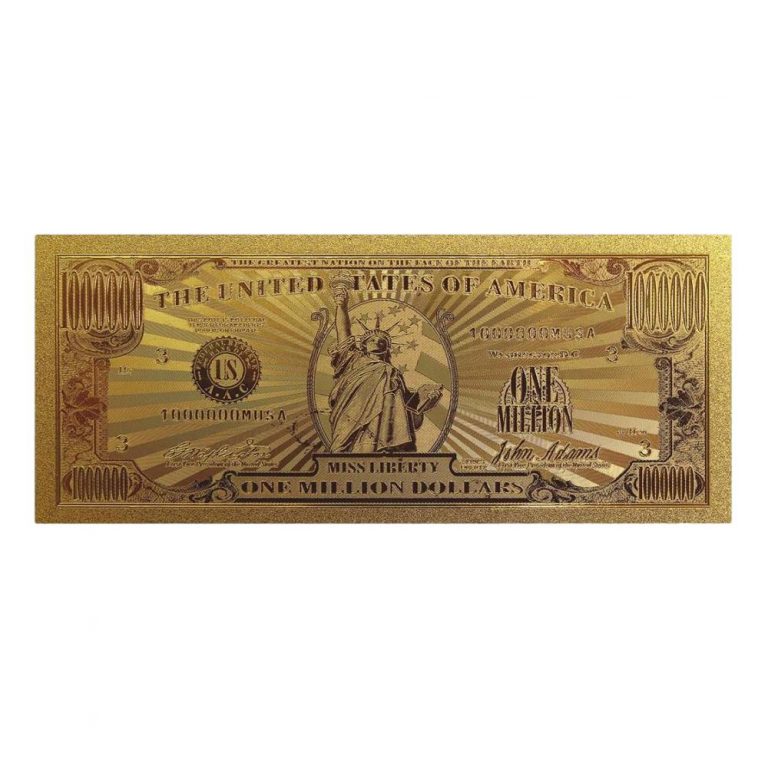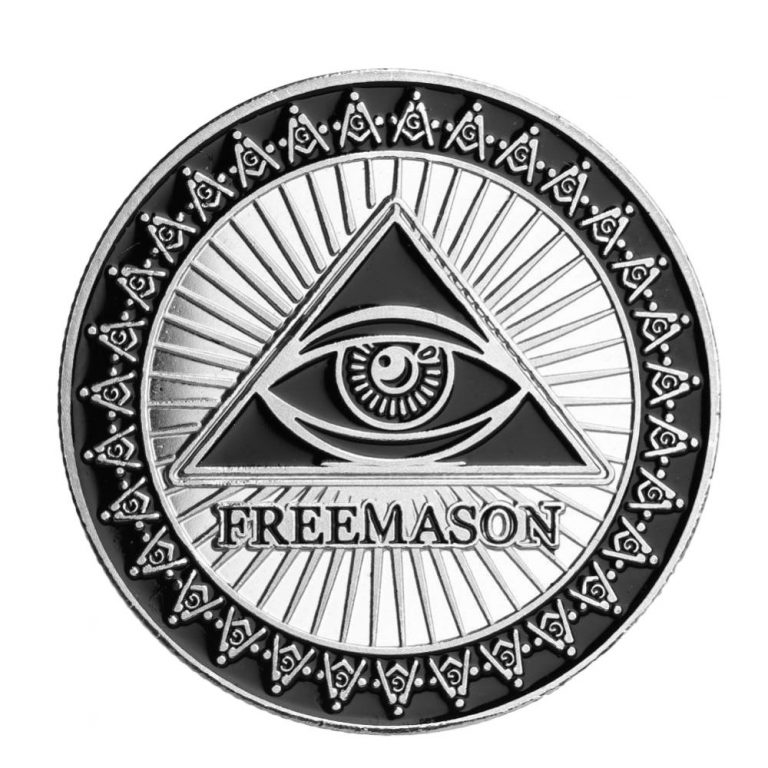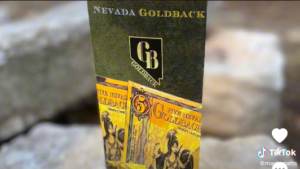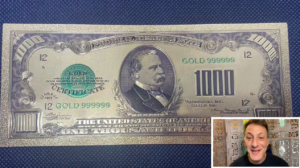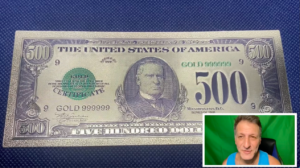Everyone knows that money is useful…
It has value. That value gives it buying power. It’s the most convenient and expedient form of trade ever managed by a society and the concept has been around for a long, long time. Back in ancient times, money was guaranteed in value by those who printed it and dispersed to the people in exchange for their work and labor. Time went on and precious metals were introduced, which had inherent value in multiple forms, thus allowing them to trade with that value.
Nowadays, we have many forms of currency, but the most common and iconic is still the bank note. Ideally, Dollar bills are claims to assets that are part of a much larger collective, and based on a hard asset with very little changeability: gold. The Gold Standard ensures that all money has equal or equatable value based on the country’s overall wealth. It ensures that $1 is just $1, no matter where it’s spent. Unfortunately the gold standard is not used for the dollar, so it is what it is because the government says so by “Fiat.”
This is the basic, essential use of money. It lets people control value and command action in an economy. A lot of thought and intentional design has gone into every major unit of currency to make them identifiable and difficult to counterfeit. The value of money isn’t just in its inherent buying power, however. Cash bills of various kinds can be used for other purposes. They can be good luck charms, milestones, decorations. There are even replica bills that have potentially more value than regular money, but in a different way.
Collecting Replica Money
The dollar has is a symbol or power. When people think of money they don’t imagine a huge vault of gold hidden underground or the complex promissory process that gives the bills the value that the gold represents. For the most part, they think of the dollar as a separate, unique entity with its own power. The imagery of the dollar bill is what’s iconic, from the faces of Presidents and world leaders to the mystic, theosophic imagery on the reverse side.
The Dollar can be considered a form of art. It’s a medium of portraying value. So, when replica money prints different things on the dollar, it changes that value and alters the meaning. Fake money carries many differences that completely separate it from real, tenable currency. There are all sorts of very technical checks that go into those thin strips of unique paper. Replica money lacks most or all of those features and instead opts to use the dollar bill as a portrait celebrate.
There are dollar bills printed in parody, featuring characters from popular franchises, used as merchandise. Collecting replica money is the same as collecting any other memorabilia, it’s to show off and have fun with the ownership of a unique piece of crafted art. Some of these can be iconic – a $100 with Jesus on the front, which combines the symbol of Faith with the medium of Money, to show how much value Christ has to someone. Or they can just be for fun. Dollar bills with cartoon characters or intentionally altered faces of presidents are classic examples of this long running money-media trend.
Why Not Just Collect Real Money?
Money changes over time. Specifically, the appearance of money can change. As new techniques for identifying fraud are added to each note, the face and appearance of the bills has to change to stay up to date. The computers and monitors inside of banks and ATMs don’t just take pictures of bills to compare them to what they should look like. There are magnetic strips, watermarks, serial numbers to track them – a lot of security is in place for even the smallest transactions.
There are enough differences in old money to make it worth collecting. The most iconic representation of a usable, real note is the $2 bill. It was real, at one point, when currency had much more inherent value. $2 was close to $10 when the bill was first circulated, but then widespread printing and economic changes altered the value of what money was worth. For $1 bills to stay as close to $1 as they could, the $2 bill had to be phased out. New presses and prints of cash also lead to updates of old designs that includ new security measures, so even standard bills like the $5 and $10 can have a value of their own for being old and out of circulation.
Collecting old money is expensive, though. You’re not just paying the equivalent price of what the bill represents. It’s not like trading a new bill for an old one. The bills themselves, as art and as assets, have a value more than what they were printed to represent. Coin collecting has a similar history. The US Treasury occasionally prints coins with unique faces for celebrations or commemorations of historic events. They are sold at initial values, sometimes representing whole dollar amounts, but the printing is limited, which means the supply becomes limited and their value goes up.
There’s more use for fake money than as movie props or committing federal fraud. Beyond the simple value of wealth money represents, there is also the value of value that it holds.
Good Luck Charms
Replica money can be used the same way as good luck charms. The value they have isn’t directly financial, but something more spiritual. By having money you can attract money, “The Rich Get Richer.” Activating that mindset can be difficult if your wallet is empty and your bank account is low. But having something to motivate you can give you the drive to accomplish things that real money can’t do. You can’t buy the will to succeed and the mental power to push forward, it has to come naturally, or be invoked by something inspirational.
Good luck charms are common throughout many societies. It’s simple human psychology, we want to attribute consequences onto other things and project our inner feelings outward. People attributed the rainy season to their own activities, despite not being in control over the skies at all. When good or bad things happen without explanation, we seek out something to hold responsible for it because it gives us that sense of control that keeps us calm in a stressful world. That belief creates a self-fulfilling prophecy, where because we blamed something for an action, that thing caused it, and will continue to cause it under the right conditions.
This is where replica money can make a positive impact. Attributing success to something like a lucky stone or part of a song is hard, because there are too many degrees of separation to make sense. It’s like two people explaining a different constellation to each other. One person sees something different in the stars because it’s closer to what they grew up understanding. Money being used to attract Money is more straightforward and easy to understand.
American dollars already have a degree of supernatural symbology to them. The All Seeing Eye, the eye within the pyramid, is an ancient symbol of forbidden knowledge and understanding the innermost secrets of the world. The Eagle is a symbol of freedom, but what it holds in its hands changes how that freedom is gained. The Icon, the face on the front, symbolize the revered and honored Presidents and leaders of our past that helped create the nation we all live in today.
By changing the symbols around to be more personalized, or more direct and to the point of gathering value, a single uniquely designed dollar bill can bring a sense of motivation, success and personal drive. In the end, it’s still just paper, an artistic rendition of value. What if there was a way to add more value, more mysticism, and more wealth to an object?
Gold Leaf Plating
Gold is the universal basis of most currency. It never corrodes or tarnishes. It’s resistant against the effects of weather, acids, fire, damage; Gold is valued for its purity. Nothing stops it from simply being Gold. It has long since been desired for its splendor as a rare metal long before ancient people knew about its properties, especially in the way of technology. Gold is one of the best conductors, and is used in the majority of high end, advanced computing and other technological devices. Its uses are as limitless as its value.
Gold is also very heavy, and very thick. It’s a dense metal, but also very soft. It can be molded easily into many shapes at a relatively low temperature, and because it maintains its purity so well, it can be melted back into more shapes as well. This is where the phrase “worth its weight in gold” comes from, because the only true way to value gold is by how much a piece of it weighs. Its shape, the extra bits and pieces in it, they don’t matter. All that matters is mass.
But even the thinnest piece of gold is still Gold. It still has impressive value. Gold can be added to existing metals in a process called “gilding”. This applies an extremely thin layer of gold to an object, giving it a tarnish-proof coating that is lustrous and pure. Underneath it could be brass or bronze, but what the eye sees first is Gold. The most common process of gilding now is the application of Gold Leaf.
Gold Leaf sheets are 0.1 micrometer thick. For comparison, the average piece of human hair is about 50 micrometers thick. Despite that, Gold Leaf is easily visible while being semi-transparent. It’s a gold covering that can be applied to nearly any surface to give it a sheen of gold and an inherent increase in value. It can even be applied to paper, and has been in ancient times. Old cultures applied gold leaf to pieces of art, to the text of holy scriptures, and there is even today an entire temple in Japan that is coated in Gold Leaf. The structure is made of wood and stone, but it looks like it’s made of solid gold!
That is the effect you can get from applying Gold Leaf onto fake currency. It boosts the appeal and the value, which by nature would attract even more value without turning a simple piece of paper into a solid ingot worth hundreds or thousands of dollars. The worth of the weight combined with the old but established artisanal practice increases the value of gold plated replica currency to be more than actual currency, by a good amount. It can turn $1 into $50. But a $1,000 replica bill will never be worth more than the gold that covers it.
Purer By Weight:
There are many kinds of gold used in gilding. Some of it is just regular paint made to look gold. Using a fake gold on an already fake note would be fitting, but not helpful. Gold paint only simulates gold with a mixture of different, more common pigments. Gold is a very unique sort of color, especially in its purest form. That purity is what gives the highest value. The synergy of symbolic value in a replica bill and real value in pure gold leaf is what you should want.
That’s why you need to know how gold is measured in terms of its purity. The true standard for pure gold is measured in Karats. The karat is a unit, divided into 24 parts of a whole, which assesses the purity of a sample of gold. Gold can achieve the maximum 24 karat purity when the impurities, the extra alloys or metals that have seeped into it, are melted out and extracted. Gold can also be combined into alloys which incorporate other metals, but never truly fuse together the whole way.
24K gold is anything assessed to be 99.95% pure gold by volume, up to 100%. 24K gold is true, real and unspoiled Gold. However, this is not always used in gilding or plating. The gold beating process of thinning gold into leaf-sized thinness can give it a slightly different appearance from the bright and sunny yellow gold some people are used to seeing. Most gilding uses 22K gold, which is usually called Yellow Gold, and some even uses White Gold, which has a more silvery complexion, and is 50% gold by volume.
The process of gilding can be automated for mass production, but this often uses lesser karats of gold leaf sheets. The leaf is pressed into the surface of the object. For the purpose of replica currency, this can be accomplished easily. The sheets will be square to match the rectangular shape of the replica bills and then pressed down on either side to fully encase and gild the bill in a golden sheen. More complex objects can’t be put through automation. There are still many gilding processes which are done by hand due to the delicate nature of the material.
You’ll always know how pure gold leaf is based on the karat, which is based on the percentage. This should be easy to determine, because manufacturers and gilders will be proud to work with the material in any capacity. Even 22K leafing is pretty and lustrous, but the true 24K is an objective measurement that can’t be faked. When you see something is 24K gold, you know it’s worth the value. That’s the realest that gold can get. The highest value.
Having that value will attract more of it. It turns a centerpiece into art. It shows off the value that you place in your symbols and gives them power beyond simple aesthetic appeal. Why did the ancient people gild things in gold if they didn’t know its true value as an insulator, or as an anti-corrosive substance? Because it attracted wealth. It gave a power of value and substance to things that lacked it. Gold has eternal value to our race as humans. Money is comparatively a more recent invention, but its purpose has always been to equate with gold.
Going Gold for Profit:
If you’re looking for something to give you inspiration, to bring a feeling of wealth and success or to reinforce your beliefs, a great solution that can encapsulate every facet of wealth and success is in the symbolic harmony of gold plated banknotes. Make a replica of your own or see what options are available and enjoy the feeling of abundance to attract more wealth through positive thinking and symbolic synergy.
Real gold can create real results. It will turn a piece of art into an asset for the future. The value of currency, particularly of dollar bills, is based on the faith that they will represent the Country that backs them.
